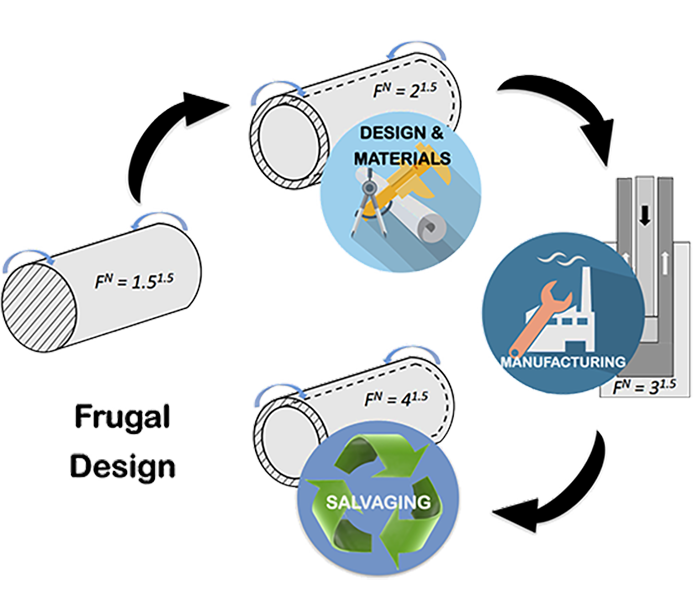Frugal innovations are all the rage! With their genesis at grassroots levels of society, these products have evolved into Advanced Frugal Innovations (AFIs) possessing good technological sophistication. Many advanced frugal products need cutting edge research other than routine science and technology for their fruition.
Frugal engineering is an important tool for tackling the challenges thrown by climate-change and other planetary and manmade crises of our time. Frugal engineering is significant for all-round sustainable development. Frugal engineering will increasingly impact all human endeavours, both commercial and public, for widespread sustainable development. Instances include, but not limited to, UN’s Sustainable Development Goals (SDGs), pandemic-related efforts, commercial and academic interests. Irrespective of your field of interest or current vocation, please drop Professor Balkrishna Rao a line for your interest and/or need for research-solution using principles of frugal engineering.
- sustainability
- climate change
- advanced frugal innovation
- frugal design
- frugal engineering
- complex networks
Advanced frugal innovations / products (AFIs) have appeared in a wide range of sectors including space, automotive, healthcare and even particle-physics! [1][2] Although the word "frugal" usually is misconstrued for being "cheap", frugal innovations are anything but. A bulk of these, especially advanced frugal innovations, are created by skilled researchers who also use cutting edge technology for realizing their goals[1][3]. This is important because of the artificial constraint on the amounts of materials going into an AFI. In particular, it is imperative to have a very good knowledge about the workings of AFIs to successfully design and develop one from scarce resources. AFIs are NOT makeshift innovations as many would want to believe. The interested reader should consult the references for more on these products or visit https://frugalengineering.in/.
Frugal engineering entails use of the frugal design approach which saves more and more material at every stage of the design process[4][5]. A schematic is given in the figure below which is taken from (https://frugalengineering.in/). This approach is based on the factor of frugality (F), which is a modern version of the classical factor of safety (S). The symbolic representation is FS. The factor of frugality based approach starts with a low safety factor (~1.5) design, which due to its low value typically uses lesser amounts of material resources for realizing the design. A caveat being that rigorous design procedures akin to those employed in the aerospace sector have to be adhered to due to the low safety factor. Such a low safety factor design is further researched for saving yet more material through subsequent stages of the product development process including materials, biomimetics, manufacturing and lastly salvaging for used parts. Each of these extraneous schemes adds a numerical quantification to the low safety factor, ie, ~1.5 and the cumulative value obtained is the final factor of frugality[4][5]. Hence a higher F value for a lower S is the best combination for FS.
Design and engineering through FS would go a long way in systematically using optimal resources for making quality products at low cost. Moreover complex networking of advanced frugal products can also significantly aid global sustainability efforts. An instance of complex networks of adaptive frugal products being electric vehicles networked to a smart grid[6]. Overall, scientific tools like FS together with government mandates[7] are needed for meticulously fighting the onslaught of planetary crises including climate change.
An interesting use of frugal innovations is in fighting poverty[8]. Scientific tools like the frugal design approach together with awareness of frugal innovations, in general, would go a long way in tackling global poverty. Governments around the world, UN, World Bank and other relevant entities should make this interesting concept available to society at large including the poor. An ecosystem could be created around frugal innovations that would help alleviating poverty by creating employment opportunities in making these innovations with their subsequent diffusion uplifting living standards at large including the poor[8]. Although private sector entities are using AFIs for benefiting society, companies should fund more research and other programs related to these innovations that would overall help the rich and poor.
AFIs use lesser resources; give quality performance; cost less; are a potent tool against our crises; and will give a fillip to inclusive growth ! Let's join the AFI bandwagon.
References
- Rao, Balkrishna C; Advances in science and technology through frugality. IEEE Engineering Management Review 2017, 45(1), 32–38, .
- Rao, Balkrishna C; How disruptive is frugal ?. Technology in Society 2013, 35, 65–73, .
- C. Rao Balkrishna; Science Is Indispensable to Frugal Innovations. Technology Innovation Management Review 2018, 8, 49-56, 10.22215/timreview/1152.
- Rao, Balkrishna C; Revisiting classical design in engineering from a perspective of frugality. Heliyon 2017, 3, e00299, .
- Rao, Balkrishna C; Rao,The science underlying frugal innovations should not be frugal. Royal Society Open Science 2019, 6(5), 180421, https://doi.org/10.1098/rsos.180421.
- Rao, Balkrishna C; On complex systems of adaptive frugal products. Royal Society Open Science 2020, 7, 192057, http://doi.org/10.1098/rsos.192057.
- Ingo Liefner; Sebastian Losacker; Balkrishna C. Rao; Scale up advanced frugal design principles. Nature Sustainability 2020, 3, 1-1, 10.1038/s41893-020-0585-7.
- Balkrishna C. Rao; Alleviating Poverty in the Twenty-First Century Through Frugal Innovations. Challenge 2014, 57, 40-59, 10.2753/0577-5132570302.

